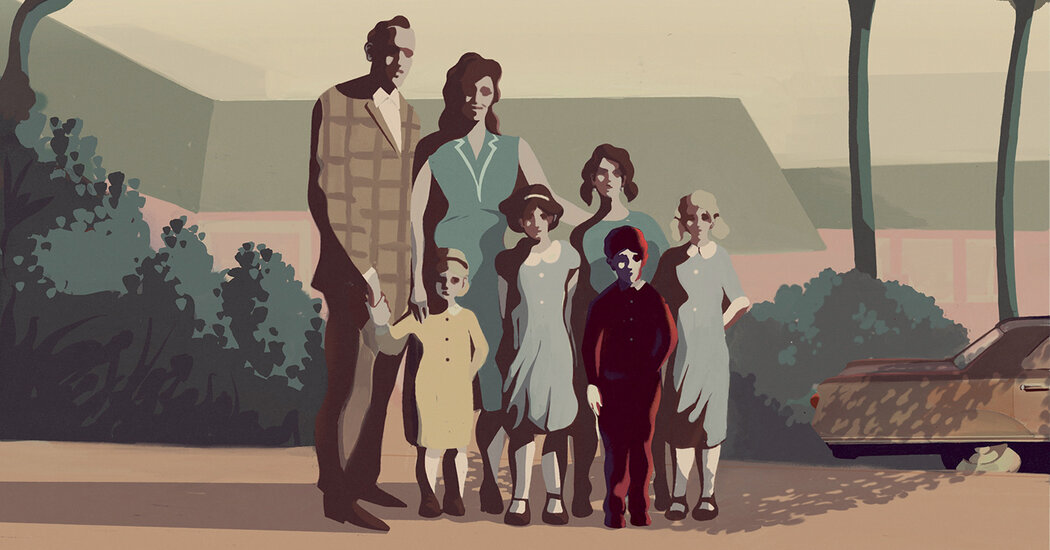WOLF AT THE TABLE by Adam Rapp
It is not uncommon for novelists to deal with speculation about how much of their own lives makes its way into their fiction. The typical response is to deflect, with some version of how we are in all our books, and leave it at that.
Adam Rapp doesn’t play that game. In a two-page introduction provided to readers in advance copies of his new novel, “Wolf at the Table,” he wanted us to know a few things about his mother, Mary Lee Rapp, who died from cancer in 1997, at 55.
Fourteen years after her death, one of Rapp’s aunts gave him a shoe box of his mother’s belongings, in which he found her laminated nurse’s ID from Stateville Correctional, a maximum-security prison in Illinois.
Rapp grew up in nearby Joliet, and lived there when the serial killer John Wayne Gacy was arrested in 1978 and later convicted of the murders of 33 young men and boys. Rapp writes that his research led him to believe his mother was “likely the nurse who performed [Gacy’s] last physical before his execution” at Stateville on May 9, 1994.
This discovery gave Rapp the idea for the novel. “I wanted to honor my mother’s life,” he writes, “and I wanted to examine how a seemingly normal family — a good, hardworking, lower-middle-class family — can be in relationship to this very scary part of America.”
Consider this fair warning: With the story of the fictional Larkin family, Rapp spares nothing in his attempt to explain what most of us want to believe is the inexplicable. For that reason, it is not a book for those weary of attempts to cast the monsters among us as merely misunderstood.
How does a boy from a seemingly normal family become a mass murderer? Rapp takes us there, step by step, from 1951 to 2010. Each chapter is from the perspective of a family member. Along the way, we get to know Ava and Donald Larkin and their children, Myra Lee, Joan, Alec, Fiona and Lexy.
The characters are predictable until they are not, the plot boring until we can barely keep up, as Rapp delivers a narrative that, even at its most shocking, is all too realistic.
Myra Lee, a fictional version of Rapp’s mother, is the oldest daughter and beating heart of this story. She is smart and capable, the emergency contact person for everyone. Except for a happy interlude in young adulthood, her life is relentlessly hard. Six years into her marriage, on a snowy night in April, her husband, Denny, abandons her and their son, Ronan, without so much as a goodbye.
Years later she tracks him down and finds out why he left, and it is Rapp’s style to leave readers feeling relieved that Denny bailed. After their brief visit, Myra imagines what it would be like if she, too, started a new life. “She could disappear, just as Denny did,” he writes. “She could start writing. Or take up watercolor painting. She could work in a used bookstore and speak with a strange accent. She could become promiscuous.”
She does none of these things, of course. Still, we cheer her on, perhaps in part because it offers a reprieve from the uneasiness her brother, Alec, inspires on virtually every page in which he appears.
“Myra feels Alec’s eyes on her like a pair of stag beetles boring into the back of her neck,” Rapp writes. “Vengeful. Judging her. She’s always wondered where his dark eyes came from. Their mother’s eyes are blue. Their father’s, gray. … But Alec’s eyes are so dark they’re almost black. It’s as if he came from somewhere else. Like they found him in a forest.”
This is 13-year-old Myra appraising 10-year-old Alec, who she believes “possesses a cruel streak that has yet to be fully realized.” At the time of this observation, they are standing outside a crime scene a few houses from their own, where the police have just discovered a family of three butchered in their sleep. This novel gets dark fast.
Year after year, family members — including the matriarch, Ava — pretend not to see what their hearts know to be true, as the increasingly troubled Alec becomes a cruel and dangerous man.
Ignoring alarming signs may sound indefensible, but Rapp — a prolific writer of plays (“The Sound Inside”), novels and young adult fiction, much of it dark — knows most families are more complicated than that. He trusts his readers to know that, too.
Never is Rapp more convincing than when he shows how, slowly and over time, the most devoutly Catholic members of this family shift from following a faith that tells them what to believe to corrupting it beyond recognition. “God might give you one good thing,” Myra declares toward the end of her too-short life, “but seems hellbent on blighting the rest of you.”
This is her belief, and the terms of her surrender.
WOLF AT THE TABLE | By Adam Rapp | Little, Brown | 464 pp. | $30

